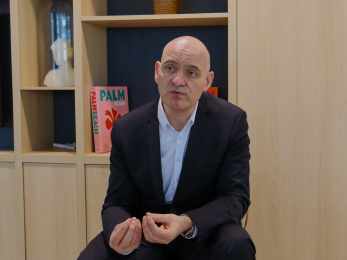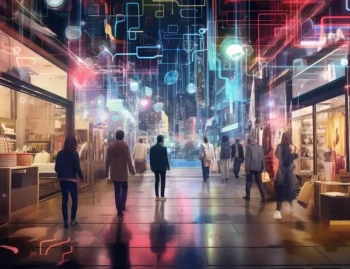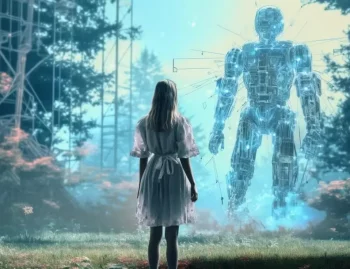“Generative AI and its possibilities”. (1/5). Here we go again. Since ChatGPT’s latest release in March 2023, we’ve started to fear AI again. “Generative AI a risk factor”, “Gen AI and the end of HR”, “K-pop turned upside down by generative AI”, “82% of companies will ban ChatGPT”. Why is generative AI (re)scary? After all, it’s a bit like using a search engine, isn’t it? This is the first in a series of articles on the subject of generative AI.
Is generative AI the same thing as Google?
What is generative AI? According to ChatGPT, generative AI is a model capable of creating original content, such as text, images, video or sound, by mimicking patterns and features present in training data. Generative AI techniques are based on learning algorithms known as one-shot and zero-shot. Learning takes place either with limited amounts of data (one-shot), or with the ability to recognize certain classes without ever having been trained to do so (zero-shot). See this article (in French).
It will be used professionally to generate predictive videos, model 3D shapes in architecture, generate voices from text (La Matinale Le Monde), create music groups (Eternity) and so on. Among the best-known tools are ChatGPT (OpenAI), AlphaCode (Deepmind), GiHub Copilot (GitHub & OpenAI), Bard (Google), Jasper (Open source) DALL-E, copy.ai, etc…
How is ChatGTP different from a search engine? One will give answers in natural language, the other will return images or videos with sources. One is based solely on data prior to September 2021, while the other indexes the entire web. In both cases, the notion of cognitive bias is important. These are the subjective differences, paralleled by human beings:
| Search engine (e.g. Google) |
Conversational agent (ChatGPT) |
Human being (Me) |
|
| How do I search? | By keywords | In naturel language | You have to ask me nicely |
| Type of answer given | Images, sound or text (metadata) | Text in natural language with no sources | Highly variable and subjective |
| Advertising | Yes | No | – |
| Database | Real-time web indexing | Data until september 2021 | What my little brain can hold |
| Ethique ? | A recurring problem | Restrictions on use | Depends on era and culture |

A human representation of AI that remains too systematic. MIDJOURNEY
Why are we only talking about it now?
Generative AI has been around since the 60s. So it’s about 63 years old, the same age as Yannick Noah. So it’s nothing new. In 2014, the arrival of new architectures known as GAN (Generative Adversarial Network) considerably accelerated developments in generative AI. This is not the case for Yannick Noah’s career. GANs use a Machine Learning technique that pits two neural networks against each other, one that creates (the generator) and the other that detects the generated data among the original data (the discriminator), so that the generator can beat the discriminator over the cycles.
Other models will follow, such as Transformers and VAE (Variational AutoEncoders) and the OpenAI initiative, which will bring these tools to the general public in November 2022 with ChatGPT version 3.5.
So, is this the end of the human being?
Human beings are complex. We use a wide variety of ways of thinking to understand, analyze and solve problems: deduction, induction, analogy, abduction, probabilistic reasoning, reasoning by contradictions or critical reasoning.
Artificial intelligence programs outperform us in modes such as deduction (knowing how to infer a conclusion from general propositions), induction (generalization from specific examples: I saw several black crows in the trees, therefore all crows are black) or probabilistic reasoning (the basis of ChatGPT).
Human decision-making is influenced by life experience, emotions and conscience. A conversational agent has no deep understanding of things. It’s software. One of the worst errors of communication was to introduce the word “artificial intelligence” in the 1960s, instead of “Data Science” or “artificial agent”, for example. We’ve seen the drift in its use in film and literature.
While all the major platforms have their own generative AI – Bard (Google), Ernie (Baidu), Llama2 (Meta) – nobody knows how generative AI will evolve. From there, I think we’re a long way from favoring the advocates of strong AI.

A abstract representation of generative AI. MIDJOURNEY
What next for generative AI?
In future articles, we’ll explain in greater detail the benefits for the company: how it can inject its own data to generate use cases, the importance of training data sets, or the need for IT departments to renew their infrastructures.
We also invite you to visit us at the fair:
- September 25-26 BIG DATA & AI – Paris: how generative AI can be grafted onto your data platform
- September 20-21 at SIDO – Lyon: demonstration of how to integrate generative AI into a data and IoT platform.
Matthieu LENTZ – Directeur Marketing JEMS






